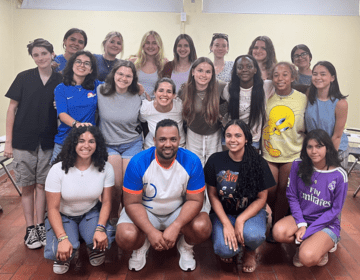Viva La Mariposa (Long Live the Butterfly): A student blog post by Rebecca and Ananya
Meet Guest Bloggers Rebecca and Ananya! These two bright women teamed up to bring us an informative and impactful piece about the women's freedom movement in the Dominican Republic that was born of a thirty year oppressive dictatorship. What follow is the (abridged) story of the Mirabal Sisters.
Viva La Mariposa (Long Live the Butterfly)
The Mirabal Sisters and their fight for freedom are both integral parts in Dominican history. Minerva, Patria, and Maria Teresa Mirabal were martyred and became a symbol of strength for women all around the world. The sisters were also known as Las Mariposas, or The Butterflies, to those who were a part of the revolution. They were killed on November 25, 1960, a day that is now observed internationally as the Day for the Elimination of Violence Against Women. Trujillo’s regime then began to fall apart and he was assassinated 6 months after the death of the sisters.
We recently visited a museum called Casa Museo Hermanas Mirabal, the house where the three of them once lived together for ten months in hiding from Trujillo. Before visiting the museum, we learned the butterflies’ story. When traveling to the museum, we saw symbols of the Mirabal sisters covering the streets. From a mural on a water tank to a large sculpture of a butterfly, it is evident how much they mean to the Dominican people today.
Our tour guide gave us a small overview of the history of the Mirabal Sisters before leading us into the house. We passed by the living room where there was a cabinet containing photos and memories that belonged to the family, and there we saw photos of children in the family and Minerva Mirabal’s sculptures of her children. I remember seeing the case that contained various things that were found on the sisters when they died. Next, we saw the rooms that the three sisters and their mother stayed in. In the rooms, there were photos from weddings, clothes, and jewelry amongst other belongings. Sadly, we could not take photos in the house.
In Minerva Mirabal’s room, there were many things that represented the important accomplishments of her activism. The law degree that she earned was framed, and we learned that she never used it because Trujillo would not let her practice law. There was also a typewriter, where she would type out newspapers that informed the public about Trujillo’s corruption. The dominican flag was also on the wall, the one that she would have held after independence but could not due to the assasination.
After walking through the house, our group walked outside to the garden. It was bright and filled with beautiful plants and symbols.
The garden contained a gorgeous memorial that was dedicated to the three sisters and Minerva’s husband, Manolo. Their remains were buried close to a fountain that symbolized how young the four were when they were killed brutally. There were also busts of the four. We walked around the memorials, stopping to take photos here and there.
We were really moved by the memorial. We stood around the memorial in quiet reflection for a few minutes. We thought over the sacrifice that the sisters made and we felt connected to them.
After leaving the museum, we had a deeper understanding of what the Mirabal Sisters did for the Dominican Republic. They sacrificed their lives to create a better future for their children. It was empowering to walk through the house and learning more about these brave women. The Mirabal Sisters serve as a reminder to everyone around the world that you have to fight for what’s right.
Thank you, Rebecca and Ananya for taking the time to share with us a little bit about the heroines of this country! We so appreciate your contirbution!
Related Posts

